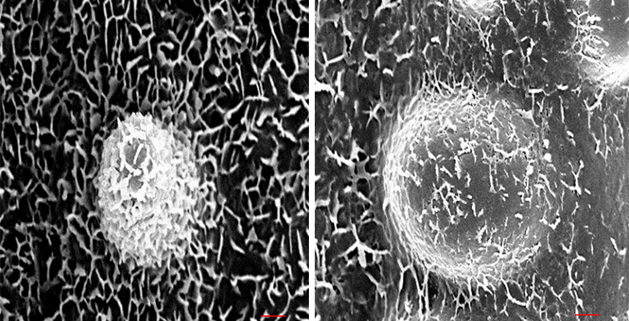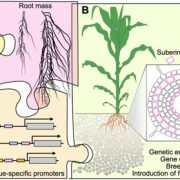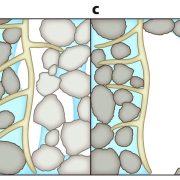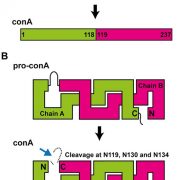Wax Protects Rice from Drought Stress
Wang et al. investigate how two proteins work oppositely to regulate wax contents and drought stress response in rice https://doi.org/10.1105/tpc.17.00823
By Zhenyu Wang and Qingyun Bu
Background: Rice is a staple food for world populations and its production is threatened by drought stress. Cuticular wax is the outmost layer of the plant and provides an essential barrier for decreasing water loss, and enhancing cuticular wax contents can markedly increase the drought tolerance of rice.
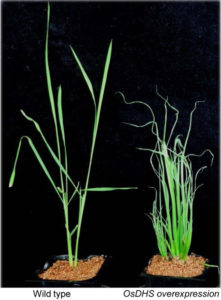
Leaves of OsDHS overexpression plants began to wilt 60 min after the seedlings were transplanted into soil from a culture bottle.
Question: How does rice increase or decrease cuticular wax content, and which genes or proteins play key roles in this process?
Findings: We identified Oryza sativa Drought Hypersensitive (OsDHS) as a new player in controlling cuticular wax biosynthesis and the drought stress response. When the OsDHS gene was overexpressed in rice, leaf wax content was dramatically decreased, where as wax content increased in a OsDHS knock out mutant, suggesting that OsDHS functions as a negative regulator of wax biosynthesis. In addition, we found that the transcription factor OsROC4 physically interacts with OsDHS. Analysis of OsROC4 over expression plants and knock out mutants indicated that, in contrast to OsDHS, OsROC4 is a positive regulator of wax biosynthesis. Further biochemical and genetic experiments proved that OsDHS promotes the degradation of OsROC4 protein, and OsROC4 acts downstream of OsDHS, suggesting OsDHS and OsROC4 function as a cascade. Moreover we found that the OsDHS-OsROC4 cascade regulates wax biosynthesis by controlling the expression of OsBDG, a gene potentially directly involved in wax biosynthesis.
Next steps: Our discovery of a previously unknown function of OsDHS and OsROC4 in regulating wax biosynthesis and the drought stress response in rice suggests that OsDHS and OsROC4 might be targeted in rice improvement programs aiming to develop drought-tolerant rice cultivars.
The E3 Ligase DROUGHT HYPERSENSITIVE Negatively Regulates Cuticular Wax Biosynthesis by Promoting the Degradation of Transcription Factor ROC4 in Rice
Zhenyu Wang, Xiaojie Tian, Qingzhen Zhao, Zhiqi Liu, Xiufeng Li, Yuekun Ren, Jiaqi Tang, Jun Fang, Qijiang Xu, and Qingyun Bu (2018). Plant Cell 30: 228-244; https://doi.org/10.1105/tpc.17.00823


